If it feels as though things have been changing at unprecedented pacing since the calendar added another 20 to its 2 — you would be right. That’s to be expected, however, with the rapid expansion of Web3 as the technology breached the gap between the tech-centric and the common person, sustainability began outpacing mass consumption as a communal effort to reverse climate change, and life – as we knew it – otherwise made a massive pivot.
As with any time of great change, there comes a requirement to make great adjustments, and observations of these shifts in order to not only stay relevant but outpace the ripples and ride the crest of the wave into the future. And in keeping with our impeccable history of staying ahead of the curve and the first on any number of waves, we’ve compiled a few key ripples to keep an eye on in 2023 as they develop into waves.
TL;DR
- Sustainable startups
- The new VC
- Earned > Paid
- AI infiltrates martech
- Social commerce becomes commerce
- Enter the metaverse
- Brands embrace Web3
- Creator economy boom
- Visual search
Sustainability startups are big money
While fast fashion and mass consumption may have defined the 2010s and the Instagram era of media, sustainability has been setting the stage for the new decade. While largely motivated by the potential impending doom of all of humanity, GenZ has been a major proponent in the shift towards green products with a collective predisposition towards sustainability, accountability, and transparency — both in media and consumer goods.
In 2020 alone, the sustainable investments had amassed themselves to a staggering $35.3T according to the Global Sustainable Investment Alliance (GSIA), which at the time accounted for 36% of all professionally managed assets globally. This number for many was not simply evidence of the shift in consumer preferences, but in investment practices, as investors turned their gaze towards sustainable products in recognition that there was not only a market for them but that it was growing substantially YOY.
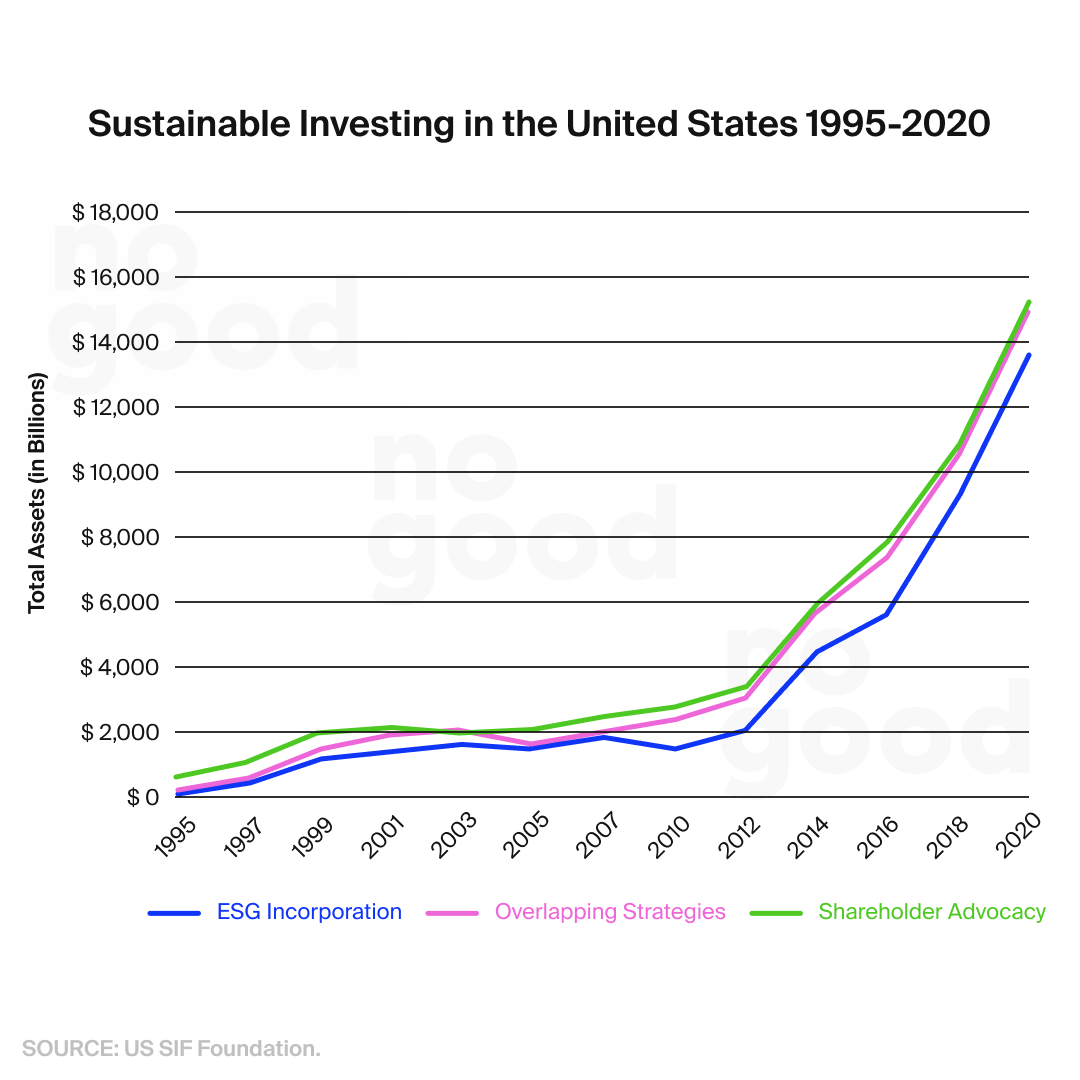
From a consumer behavior perspective, we have witnessed that buyers are increasingly willing to spend more for better quality products at the expense of quantity — if they know that the product is made sustainably, and where the costs are coming from. In response, while legacy brands are heeding this signal to make shifts in their production, new coming brands & legacies alike are also seeking opportunities to cut corners, and capitalize on shrinkflation by charging more for less product while making attempts to greenwash & make false claims as to their environmental contributions and efforts.
The newly minted conscious consumers in GenZ and beyond, however, have adopted substantial practices both through research and social validation to not only hold brands accountable, but themselves, and many brands have been caught – and at times canceled – attempting to greenwash their products for the sake of quick profits.
This wave of sustainability has spurred not only the reimagining of the products we consume from day to day, like our washcloths, beauty products, clothes, and other forms of consumables, but our energy, infrastructure, and other forms of services. In keeping with the trends of eco-conscious consumerism, the shift to green is being seen rippling through nearly every industry as consumers turn away from anything that’s not – at a baseline – carbon neutral.
VC but without the venture
If the current interest rates & the number of layoffs from the otherwise bulletproof social & tech giants are any indications, the economy may not be doing swell at the moment — despite the recent – and record-breaking – black Friday numbers and the value of venture capital growing exponentially in recent years. That said, the venture capital sector is definitely going to be putting the squeeze on their money which will undoubtedly have ripple effects across numerous industries.
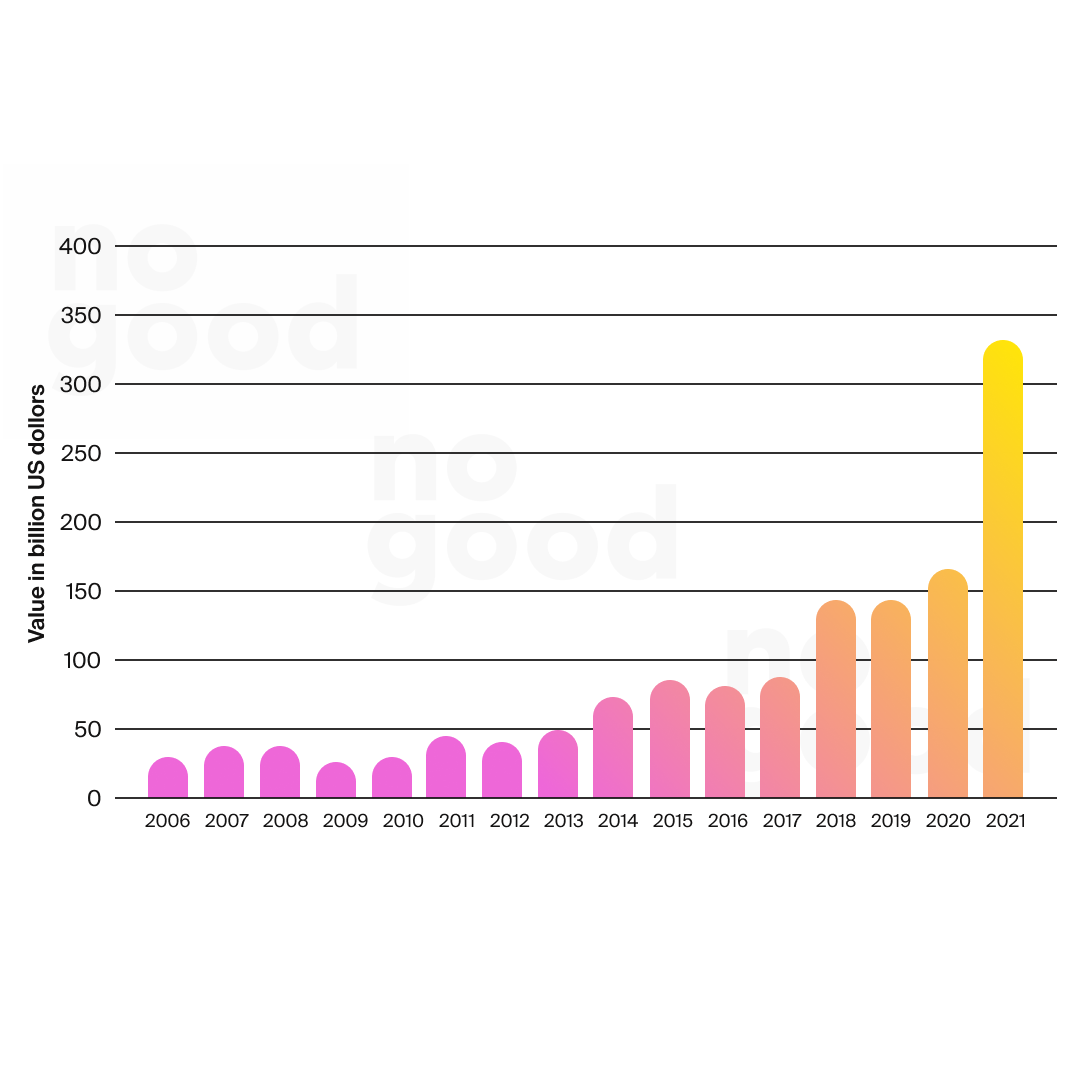
The days of exorbitant valuations may be over for the foreseeable future, and as cash becomes more scarce, teams will become slimmer, ad dollars will become more difficult to come by, and efficiencies will need to come from new spaces in marketing stacks. For marketers & their teams specifically, this means testing less, extrapolating more, and doing more with less.
Don’t get us wrong, testing will still very much be a thing, but while prior you may have had the budget to test 70x iterations of a single ad to be definitively sure of where inefficiencies were in your ad stack, now the budget may only allow for 10. And while many marketers may have become accustomed to having an analyst, designer, writer, and strategist on their team for each account they get assigned — the new reality may mean managing without in many cases.
This may be seen as an intimidating prospect for many, but ultimately these dips in the market tend to leave in higher levels of innovation as both investors and talent alike are far more scrutinous with where their time, energy, and capital are going.
As a direct byproduct of this, the concentration of effort & talent tends to churn higher success rates in projects than in the high-churn environment we’ve been in where new funding is fairly easy to access and valuations are being handed out generously.
What we can also predict from this new cycle of bootstrapping is…
A focus on earned media
The content economy in 2023 is going to come in full focus as an extension of the squeeze in finance & VC sectors — leaving teams to lean more deeply into content, earned media, and organic tactics as an alternative to paid. This may come as a delight to audiences and communities who will likely get to reap the benefits of having more time and effort spent by brands to woo and entertain them, though the brands themselves may begin to feel the pressures of having to have their content perform now more than ever.
While content has very much become pay to play, with the mixture of earned and paid media leaning heavily on the paid side of things in recent years as the shift of social continued its journey of going from a place to keep up with friends to a place to discover new brands and products. However, as TikTok leads the surge for the transformation of social media from discovery to consumption, paid is becoming – once again – supplementary to earned.
As algorithms continue to make their transformation in order to allow users to find & consume relevant content, the focus building teams will likely shift towards being creator first with others supporting those leading content. This may be seen as a stark contrast to what has come to be expected with the make-up of brand & marketing teams, but with the aforementioned shift in budgets, the justification of having paid media teams being a heavy focus of building outfits may no longer exist in the coming year.
This of course will all be supplemented by…
AI, like Chat GPT, continues the conversation
GPT 3 is pretty great, we all know that — even if we didn’t. The reality of 2022, which will undoubtedly build momentum through 2023 and beyond, is that AI is here to stay and it’s becoming not just helpful but necessary to stay competitive; particularly as teams are pairing down. With the projected landscape, the implementation and utilization of AI tools into Martech stacks will likely become synonymous with survival, as they will be needed to supplement the workloads of smaller teams in order to continue to produce the same results that investors have come to expect — despite the lighter budgets.
The above may read as though we’re saying, “AI is replacing jobs.” and that couldn’t be further from the truth. The jobs that are likely to be lost moving into 2023 as a result of the economic squeeze wouldn’t have been saved with or without AI, they are just allowing the teams that exist moving forward to do more under the same circumstances.
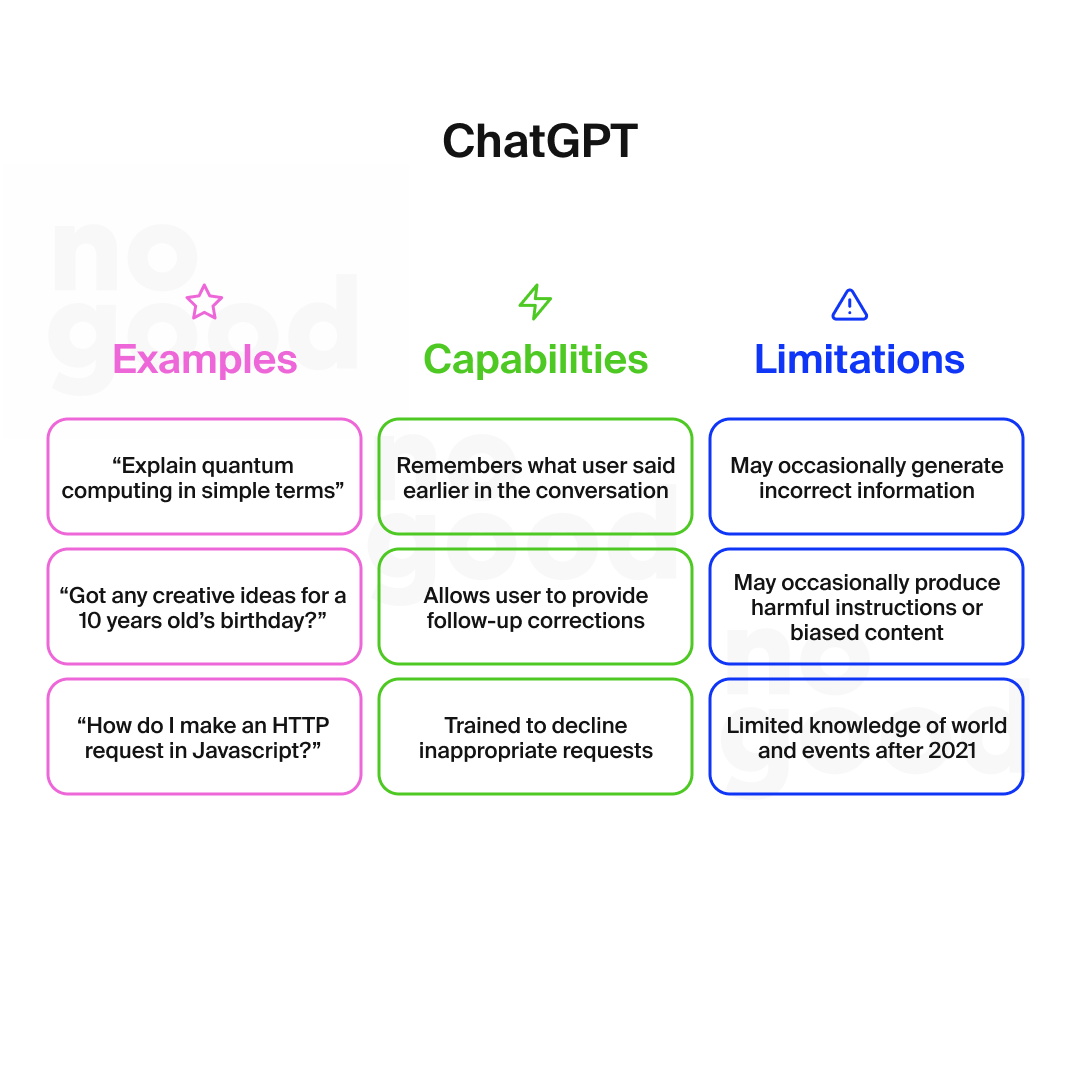
It still stands to be seen whether or not AI takes a more prominent seat at the design table, as the “creations” that have been churned out of available tools thus far are predictably gimmicky and those latching on to the work and trying to leverage it artistically have been largely opportunistic — if not worse. That isn’t to say, however, that this could all change very quickly, as the same sentiments had been said about AI writing in years prior.
If a prediction were to be made, it’s that AI writing tools will likely continue to learn and require less of a lift from their human counterparts in the coming year, though it’s improbable that we’ll be reading full books, screenplays, or blog posts that are entirely AI written. But their utility will remain the same in that they can lessen the lift necessary for creative teams, particularly those under additional stress, and enable them to keep cadences while not sacrificing quality with fewer resources.
It will be interesting to see, however, whether or not AI design follows this same path and acts as a jump-off point for designers who can iterate faster and take out a lot of the “sketching” work that is typically necessary to ideate a concept. This seems like the most probable path forward for designers to be able to use AI tools to create 15 iterations of “the letter A as the Eiffel tower” in order to save themselves the time needed to create those concepts, and then do as any good creative director would and edit & refine the ideas.
What is most intriguing, and possibly scary as well, is the mass adoption event that will follow and that impact on the creative industry. In the same way that 99% (arbitrary made-up statistic) of the population has a rudimentary understanding of Figma, Photoshop, or other forms of photo editing or design software, we will likely see that same level of understanding of these AI tools. What happens then? Genuinely asking. We’ve already seen social media figures rise to prominence for deep-faking Tom Cruise, what’s the next iteration?
Social commerce continues its takeover
Social commerce is changing the way people shop much in the same way that e-commerce changed at the onset of the internet and the conception of Amazon in the 90s. And much in the same way that people and brands once doubted whether users would order clothes, food, and other forms of consumables and subscriptions online, social commerce is poised to prove doubters wrong and usher in a new way of purchasing.
Just as we witnessed TikTok reshape how brands and individuals interact and approach content, they are too changing the way we shop — leveraging the community-driven focus that they’ve cultivated to integrate shopping directly into the social experience. This isn’t to say, however, that they’re alone in the landscape, as the Meta platforms, Youtube, and Pinterest – all save for LinkedIn – have adopted the practice of creating shoppable experiences on their platforms. Beyond just social platforms, e-commerce platforms themselves are making attempts to reverse engineer the content-driven shopping experience by embedding content into their e-commerce pages & making attempts to meet users halfway through content integrations.
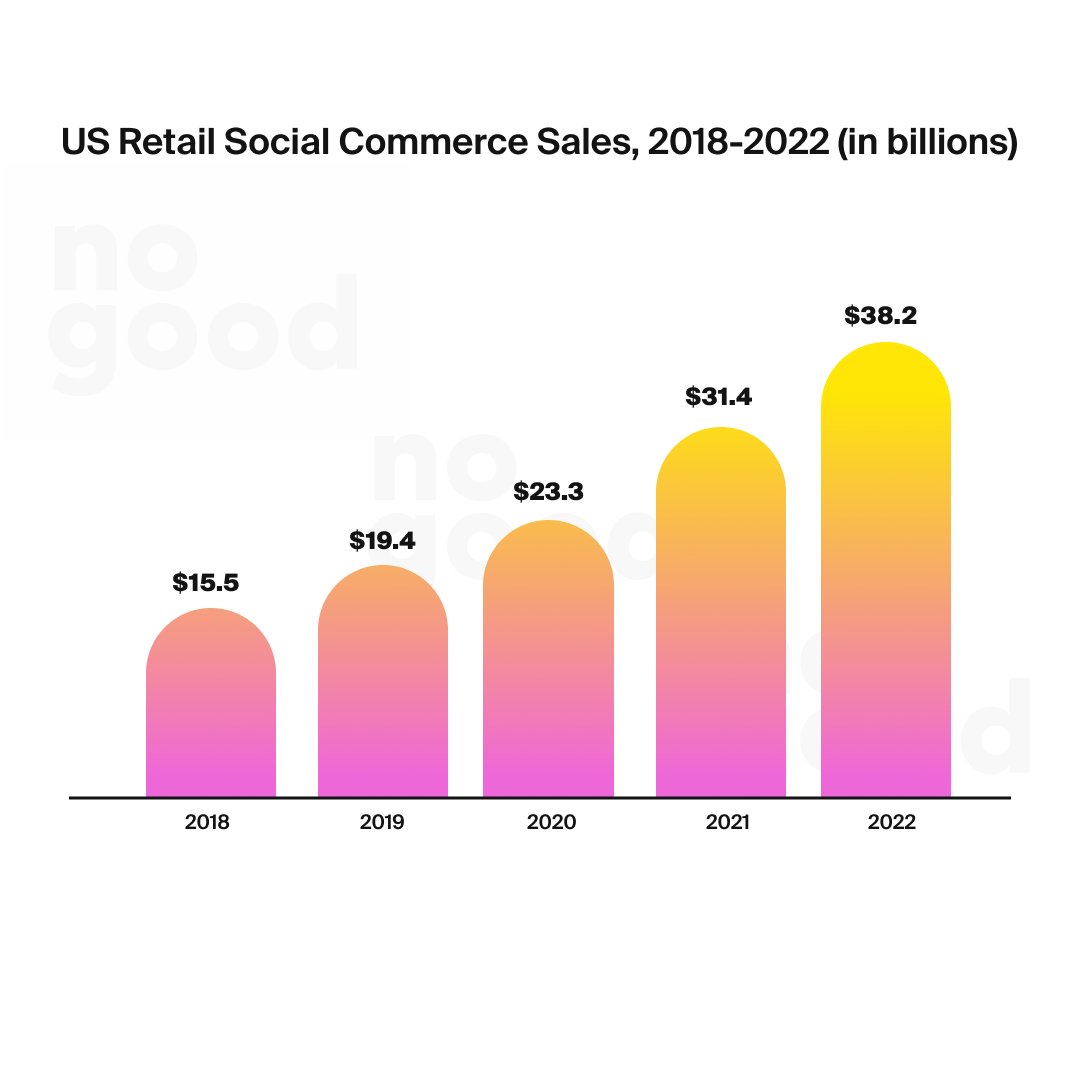
What’s to come is undoubtedly a further blur of the line between commerce, content, and community. This will be particularly helpful as brands tighten their budgets as it will remove barriers and boundaries to check out in the shopping journey on these platforms. Social shopping stands to streamline the customer journey to as few steps as discovery & validation through content, and moving users directly to purchase — potentially without ever leaving the content feed.
There should be notable mention of live streaming implementation that’s been slowly creeping into the TikTok feature stack. While it’s been there for some time, the monetization strategy hasn’t been much more than the typical user tipping systems that have become prevalent on platforms like Twitch & Youtube — where users can buy stickers and other forms of onscreen mentions, with the proceeds going to the creator during the stream.
What will likely be seen as this continues to take shape is that rather than content being used as a static validation for users to move to purchase, the content will be featured during live streams with creators showing off product – in real-time – with opportunity for users to purchase as such. This new integration will help users become more directly engaged with content, and aid in creators building trust by allowing users to be “in the room” with them (so to speak) while products are being used and tested — no editing magic, just pure content.
The Metaverse ‘gits gud’
If you happened to be at a relative’s house for thanksgiving and someone happened to pull out a VR headset for your relatives to test out — that’s not an accident. And while the narrative around Meta’s push towards the metaverse is being framed heavily around the amount of money being spent (often phrased as wasted) on building the metaverse, the reality is that in order for mass adoption to happen, the technology needs to be accessible.
Your aunt, uncle, grandparents, parents, or other forms of relatives owning a Meta Quest 2 is a sign that, despite the headlines, Zuckerberg’s push is working. The technology that once needed sensors mounted on walls, wires attached to your head, and an entire room dedicated to being used, can now fit within a box, is wireless, costs the same amount as a Nintendo Switch, less than a PS5 or Xbox Series X, and is actually readily available for purchase.
Doubt it all you want, but the numbers don’t lie with the Meta Quest 2 has sold 14.8 million units since its launch in 2020. While this is a paltry number as compared to the Nintendo Switch’s 114.3 million units, it’s not insubstantial when standing next to the PS5’s 25 million, or the Xbox X’s 17.16 million.
Ultimately, Meta hardware is becoming as commonplace in households as the legacy gaming consoles, which means that as the peripherals become more prevalent, so will the development for them, and in turn, so will the use cases for them. What was once a niche piece of hardware for those early adopters of new tech, is poised to become another staple piece of equipment that will likely be found in every household.
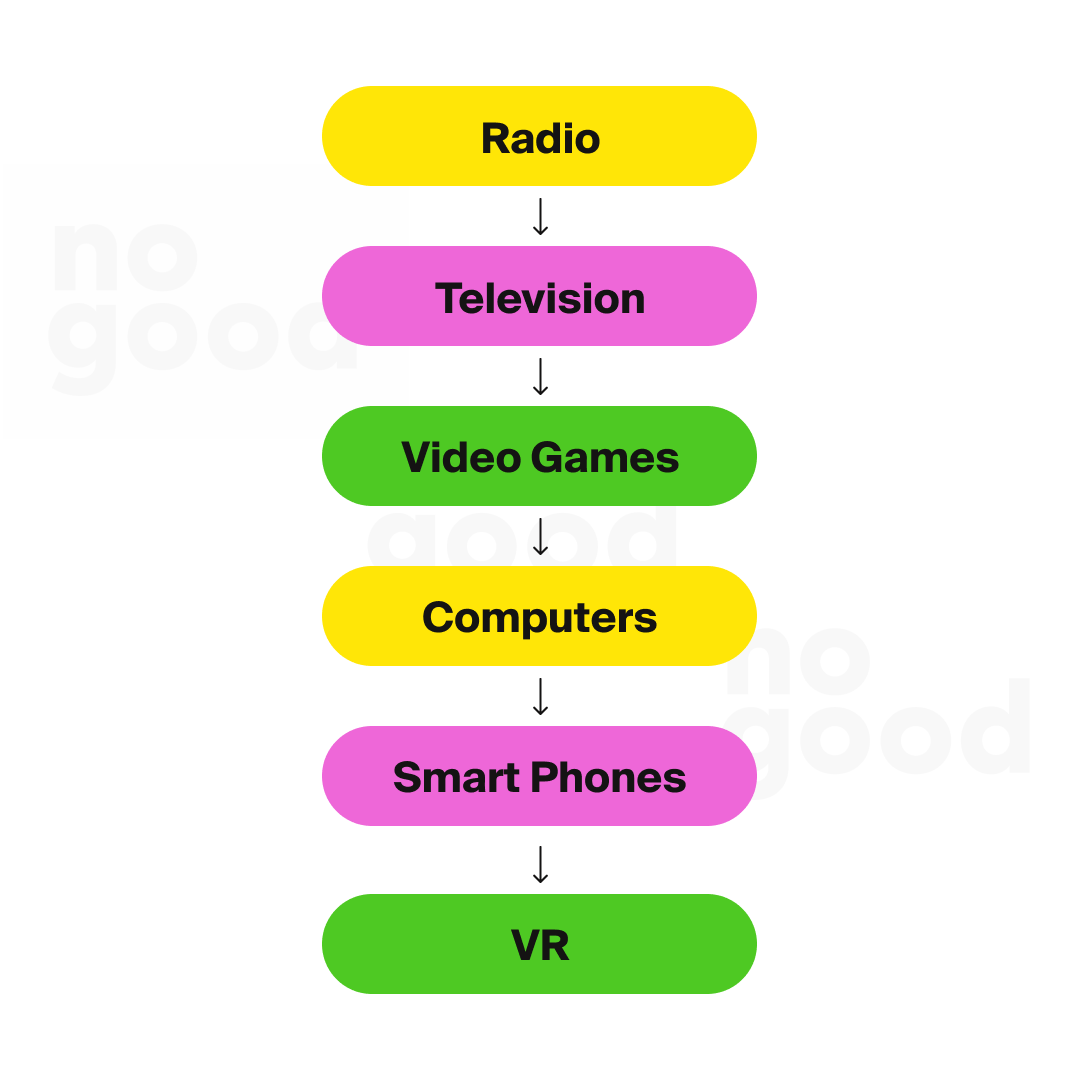
As a result, brands will flock to leverage this new platform for engagement and discovery — developing new experiences and social shopping opportunities. In the same way that experiential marketing was the “thing” throughout the past decade, with the “Museum of (insert brand product here)” becoming the innovative means for brands to reach new audiences and create lasting imprints on communities, virtual experiences will be the new and innovative opportunity for brands to experiment and dazzle users — all from their own living rooms.
Web3 maximalists will continue the push (& brands will continue to experiment)
With a similar sentiment and reasoning behind the logic for the future growth of the metaverse, we foresee a similar continuation of growth & mainstream adoption for the Web3 space. Yes, it’s true, FTX had a bad year and there have been some unsavory things that have happened within Web3 in recent history, however, that’s just evidence that things are going well — hear us out.
It’s true, FTX lost $8B – with a b – dollars in recent history. That definitely happened. Though, we would argue that the fact that they had $8B, to begin with, shows just how far crypto has come, and just how deeply integrated it has become in modern society. There have been numerous other trends, fads, and other forms of fly-by-night trends that have infiltrated mainstream society, and many, if not most of them have never had $8B to lose. Sure, fidget spinners had a few months of multimillion-dollar returns, but last we checked a single fidget spinner broker has never lost $8B and still left a single fidget spinner behind worth $327.1B.
This is besides the point, however, as brands will likely be making the strongest push with Web3 & the advancement of digital ownership of both branded collectibles and items.
With SWOOSH recently launching, ADIDAS having run through a handful of NFT collaborations this past year, and numerous other titans of industry dipping their toes – or whole feet – into blockchain, it’s only natural that we’ll see others following suit.
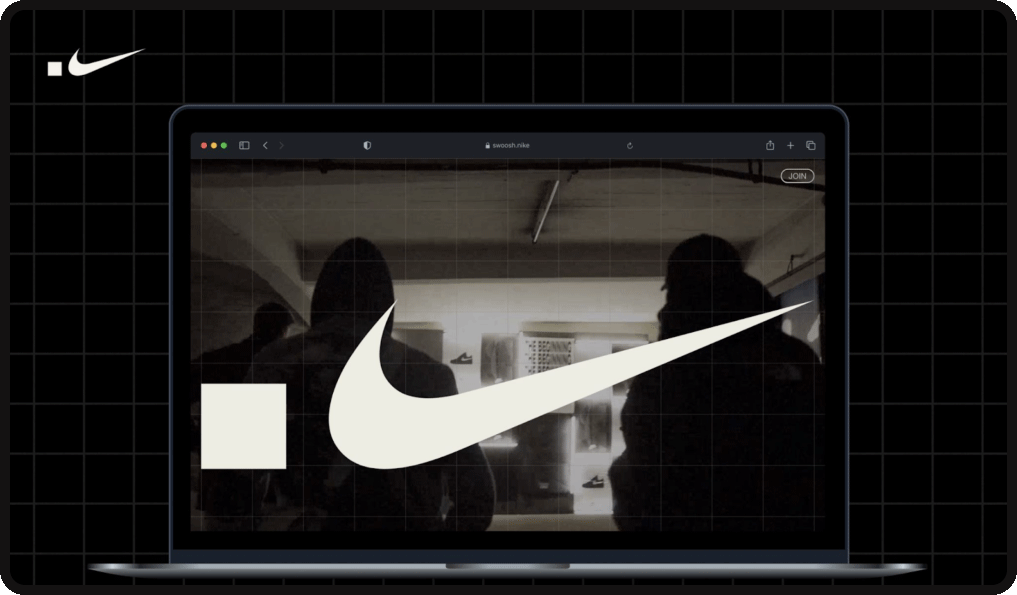
The momentum of Web3 will undoubtedly be aided by the momentum of the metaverse, with the two acting as support systems for one another, and digital identities becoming an increasingly important piece of our social status. We’ve witnessed the same happen in traditional gaming spheres, with digital wearables and other forms of virtual cosmetics. This may be hard to imagine now with the current state of the metaverse, or at least Zuckerberg’s vision of it, but as hardware improves and becomes more commonplace, the drive for digital identity will surely follow.
Redefining the creator economy
Until this point, the term ‘creator economy’ has been in reference to the exchange of content for awareness — this too is experiencing a shift in definition. With the growth of the economy, the relationship between brand and creator has been experiencing a shift, and capital has been flowing more directly toward the creators themselves — with many creators leaning heavily into building their own brands. The results of which are that these creators are leaning into the impact that they are capable of and re-investing their own money back into the brands that they’ve been building relationships with – turning sponsorships into partnerships – and venturing out into projects all their own.
No one exemplifies the spirit of this new era for content creators than MrBeast, a Youtuber who built a media empire that started with playing Minecraft and has grown into producing massive challenges, often giving away tens, if not hundreds of thousands, or millions of dollars in the process. And while his collaborations have allowed him to work with a who’s who of brands and other creators, he has also founded his own businesses with Feastables, his own brand of chocolate bars, MrBeast Burger, a chain of burger restaurants, as well as his own merch brand which often is released in limited quantities and quickly sells out.
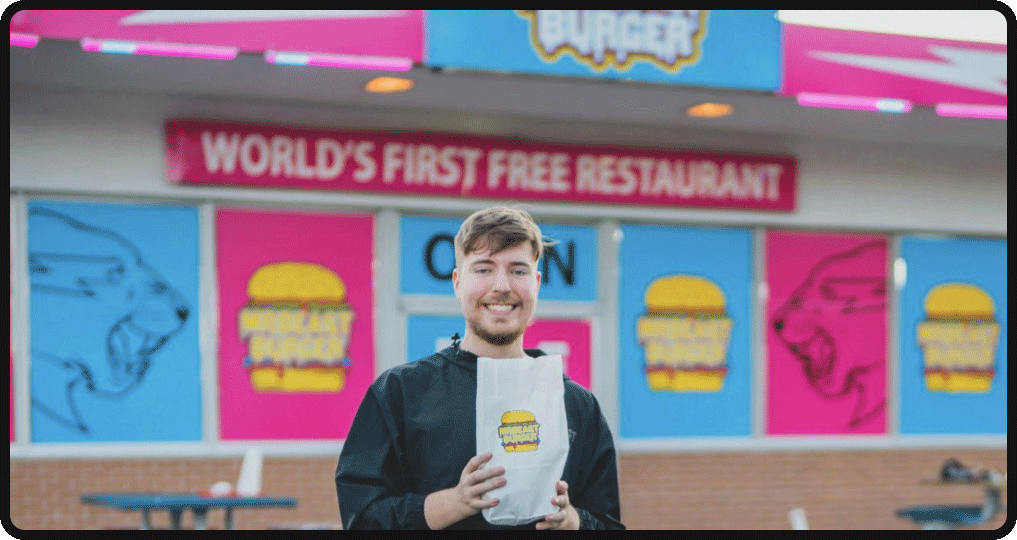
This isn’t to say that MrBeast is a typical example of what is possible for creators leveraging their influence with the brands that they work with, but he has written the guide on what creators should aspire to and do when they are presented with opportunities.
In the same way as the startup boom of the past decade or so has taught the freelance and solopreneur lot about negotiating equity and leveraging ownership with the companies they’re lending talent to, we are similarly witnessing the same occurrence beginning to bud in the creator communities. In the climate of authenticity, ownership & personal stake in a project that you are promoting can be a great lever for building trust by signaling that a creator believes so deeply in a product that they’re actively supporting it to secure its future.
The battle for search rages on
TikTok has undoubtedly been gaining momentum since the beginning of this decade following some lowkey growth during its infancy years. And in the same way that most didn’t foresee the impact that the short-form video platform would have on commerce, even fewer could have predicted the impact it would have on search.
With its focus on social validation as a cornerstone of its content and community standards, it’s unsurprising that so many have flocked to TikTok to find answers to their most burning questions. Pair this with the fact that Google has been losing trust with users with its easy-to-game algorithm – often leading to search results being unhelpful – and that the most favorable real estate of the search results page often being given to ads, and it’s no surprise that TikTok has been given favor — not even mentioning the ease of access of being able to find & absorb answers in under 10 seconds.
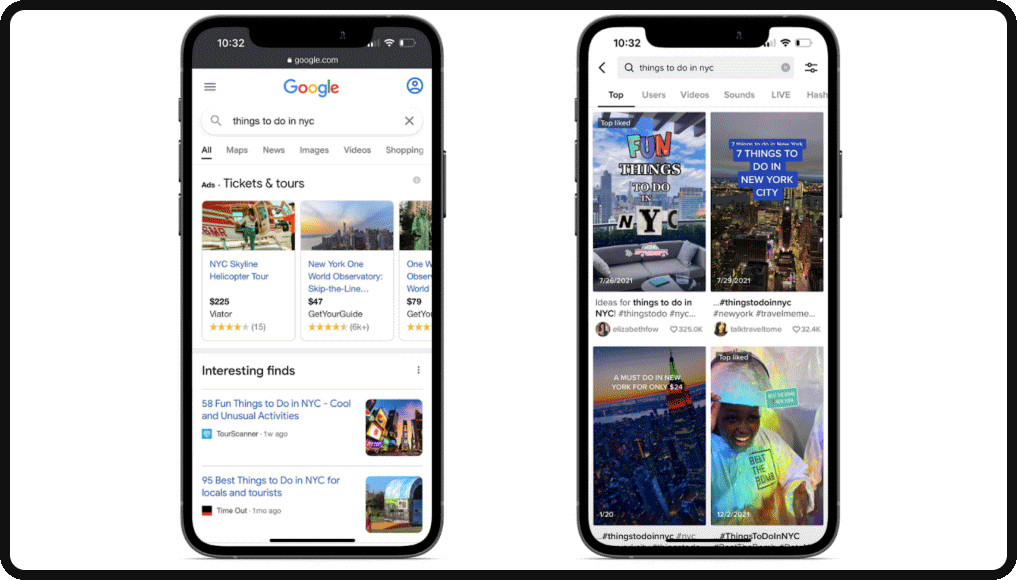
Google, unsurprisingly, isn’t just laying down and giving away their hard-earned search traffic and we will likely see this battle continue on through 2023. While video search, often in the form of snippets of Youtube videos, has been something that Google has been optimizing and giving preference to – in the same way that they prioritize featured snippets – we will likely see the same continue to happen with the way they serve up video search results.
Google has already made mention of, and in some cases began rolling out, the indexing of TikTok results as a part of their comprehensive search results offering. Though the battle that they face goes beyond just offering additional search result options, and their success lies directly in their ability to woo younger audiences and prove themselves as a valid source of information. Merely indexing TikTok videos won’t do much for them to stop the bleeding of users if they can’t cause some bleeding on the side of TikTok as well.
As we’ve seen in the past year, Google has indirectly clapped back by rolling out Shorts on Youtube, likely as a way to build their own arsenal of short-form content for their video platform. With a robust community of creators (remember MrBeast) and 2.6 billion users – over twice of TikTok – Google has a formidable tool at its disposal to turn around the battle over search. Further integrations of their video content into search results, paired with a potentially optimized shopping experience (the current Google shopping situation isn’t great) and Google can be the golden child of search once again.
2023 is go
For as unpredictable as 2022 has been – and for that matter 2021 & 2020 – we feel as though we have a pretty decent grasp on where things are going to going for 2023. It’s undoubtedly true that Ye & Elon will have a few surprises for us all in the coming months, and we apologize for the foggy glass on our crystal ball in that regard. If you would like to book some of our time, and have a personal reading for your brand from our crystal ball — we’re always open to sharing predictions.





